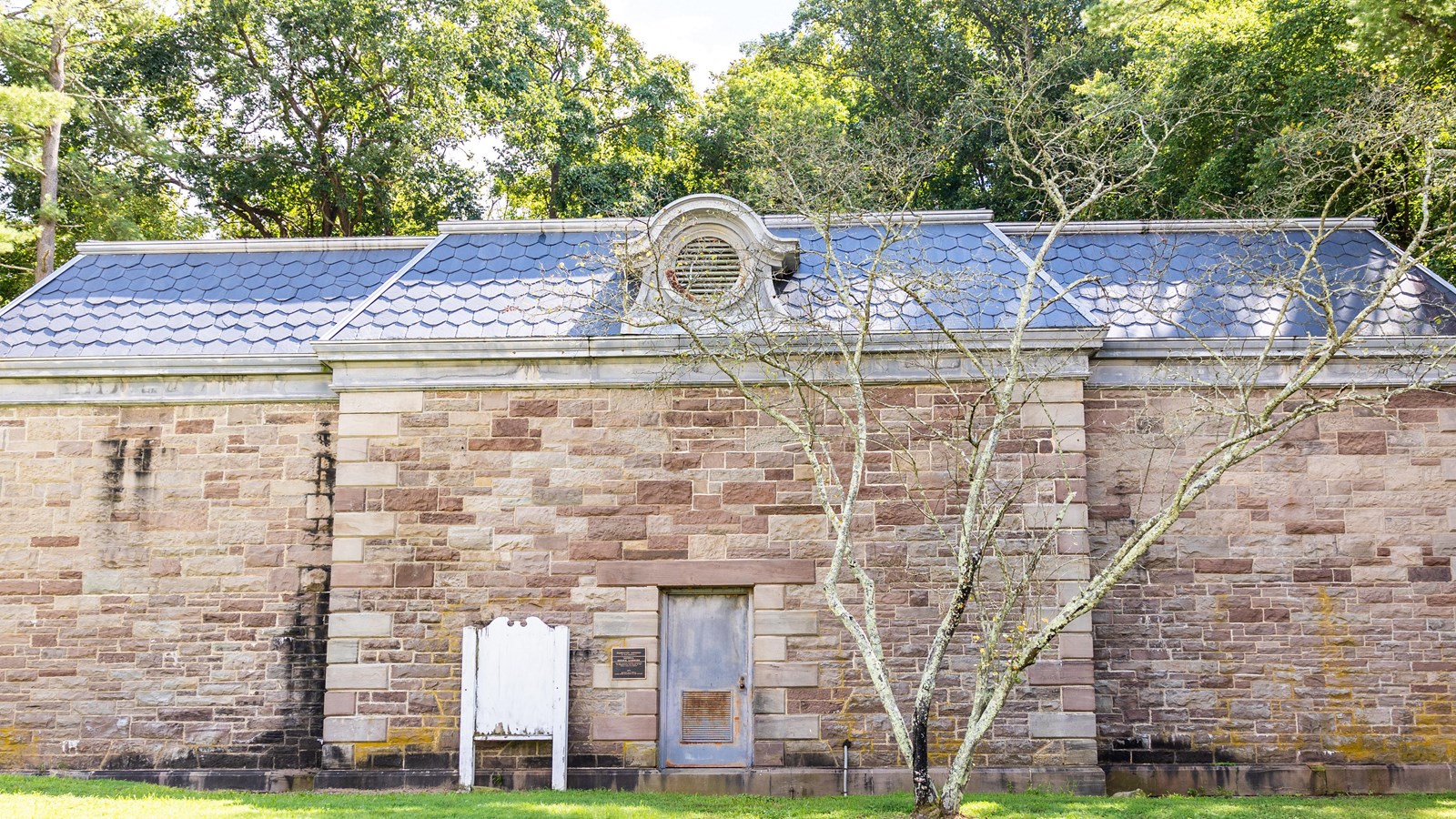Last updated: February 28, 2025
Place
Washington Aqueduct

NPS/Stephanie Spencer
The Washington Aqueduct was the District of Columbia's first public water system. Built by the Army Corps of Engineers from 1853 to 1863, it was a monumental engineering achievement. Its designer, Army Engineer Montgomery C. Meigs, supervised the project until 1861, when he was appointed Quartermaster General of the U.S. Army. The construction and successful operation of the Washington Aqueduct symbolizes the Army Corps of Engineers importance in the field of public works and reflects the military influence on life in antebellum America. The Washington Aqueduct, constructed over 150 years ago, still supplies the nation's capital with public water today.
In the 1850s, the growing population of Washington and the memory of two devastating fires forced Congress to acknowledge that the nation's capital required more than wells and springs to provide its water. In 1853, Congress commissioned a public water system. One year later, construction of the Washington Aqueduct began in Great Falls, Maryland. Meig's plan was to divert the water from the Potomac River into a large, underground conduit. Gravity, and later pumping stations, directed water through the conduit to reservoirs where it could then be pumped into the city's pipelines.
To accomplish this feat, the Army Corps of Engineers constructed a masonry dam across the Potomac, a control gatehouse at Great Falls, a twelve-mile conduit, eleven tunnels, six bridges, several pipelines, and two reservoirs. By 1863, the Corps had completed three resevoirs. Wagons and boats on the C&O Canal brought supplies like cast iron, sand, concrete, brick, and Seneca sandstone to the construction sites. The initial dam reached halfway across the river. In 1890, in order to meet the District's increasing demand for water, it was extended to the Virginia side. Meigs designed the dam to be anchored to the river bottom, not to block its flow but to divert it.
Although no longer in service, the first gatehouse still stands next to the historic Great Falls Tavern along the C&O Canal in Maryland. Inside was a system of 20 small cast iron slide gates that filtered the largest debris from the water.
The conduit stretches almost twelve miles downriver from the intake at Great Falls to the Georgetown Reservoir. The underground, circular tube, built of brick, stone, and mortar, is 9 feet in diameter. A road ran parallel to the conduit to facilitate cleaning, repairs and inspections. The road was originally named Conduit Road; today it is MacArthur Boulevard.
As part of the original Washington Aqueduct water system, workers constructed six bridges to carry the conduit over streams and creeks. Only three, Bridge #3, Cabin John Bridge (also called Union Arch Bridge) and Rock Creek Bridge, remain today. Cabin John Bridge, built of granite and sandstone, held the record as the world's longest masonry arch structure (220 feet) for 40 years. Today, Rock Creek Bridge’s 200-foot arch is still one of the longest unsupported metal pipe arches in the world.
Aqueduct water spilled into two reservoirs, Dalecarlia Reservoir at the District line and the Georgetown Reservoir two miles downriver. By allowing the murky river water to stand in these reservoirs, debris settles to the bottom before distribution throughout the city. However, the process never successfully removed all of the sediment and thus, Washington City's public water had a muddy-yellowish color until the installation of a rapid-sand filtration system in 1928. Today both reservoirs have been completely modernized.
Several inscriptions at various places honor the engineers who designed and built the Aqueduct. Meigs had his own name and his assistant’s name, Alfred L. Rives, engraved on the Cabin John Bridge. When Rives quit the US Army to join the Confederate Army in 1861, Meigs replaced his name with the Latin phrase Esto Perpetua, or “Let It Stand Forever." After former US Secretary of War Jefferson Davis became the president of the Confederacy, his name was removed from the bridge as well. In 1909, Theodore Roosevelt ordered it be re-engraved.
While building the Washington Aqueduct, Meigs was also Chief Engineer for the extensions and new dome of the U.S. Capitol, and the enlargement of the General Post Office Building. Both of these buildings are now National Historic Landmarks. After his work with the new aqueduct, Meigs served as Quartermaster General of the United States Army, both during and after the Civil War. During this tenure, he designed the Pension Bureau building, now the National Building Museum (also a National Historic Landmark). During the Civil War, Meigs helped establish Arlington National Cemetery, where he is buried.
In the twentieth century, the aqueduct’s capacity was expanded many times. As of 2017, it produces 300 million gallons of filtered water per day, has a storage capacity of 44 million gallons, and serves 1.1 million customers. The aqueduct provides public water for all of Washington, DC, Arlington County, and Falls Church City in Virginia. The continual effectiveness of the historic water system is a testament to Meig’s design and the professional work of the Army Corps of Engineers who continue to operate it today. A portion of the aqueduct runs through the Cheasapeake and Ohio Canal National Historical Park, where you can see the originial engineer's house and gatehouse.
